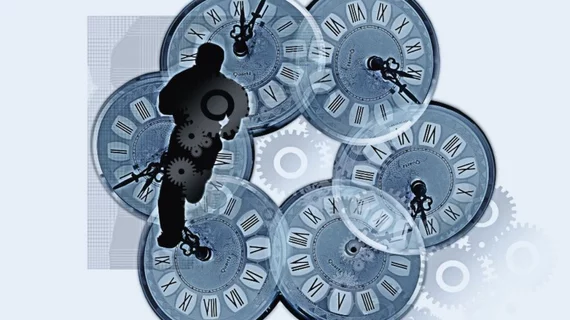5 ways to reduce burnout among CT technologists, improve workflow
CT technologists, just like radiologists and other imaging professionals, can experience high rates of burnout. What can be done to combat burnout and keep patient care running smoothly?
A recent analysis published by Current Problems in Diagnostic Radiology explored this very issue.
“Technologists are often the only human element standing between patients and the intimidating machine that may deliver life-changing information about their health,” wrote Sharon Mohammed, BS, RT(R)CT, department of radiology at NYU School of Medicine in New York City, and colleagues. “They are tasked with acquiring high diagnostic-quality images while delivering a positive patient experience, though also meeting the high demands of efficiency, throughput, and expanding patient volumes. This demanding clinical environment can lead to burnout and compassion fatigue among technologists.”
The authors worked hard to address technologist burnout at their own institution, forming a Process Improvement Committee that included technologists, radiologists, executives, middle managers and other stakeholders. These are five ways they found burnout can be reduced among CT technologists:
1. Employ a CT registration specialist. Mohammed et al. noted that making one person on duty serve as a dedicated CT registration specialist can make a big impact on how long it takes patients to register when they arrive for an exam. Making registration a faster, easier process makes the entire examination process less stressful for the patients, which has a direct impact on the technologists who help them.
“Previously, patients awaiting CT exams waited on the same line as multiple walk-in patients for x-ray and ultrasound,” the authors wrote. “Now CT patients are instead directed to a separate dedicated CT registration kiosk. At this kiosk, the patients are registered and prescreened by personnel familiar with the scan types, drink times, CT contraindications, etc. In order to optimize registration, our department has gone paperless and all demographic forms are filled out electronically.”
2. Ask radiologists to protocol exams at least three days in advance. When radiologists do this ahead of time, the authors noted, it gives everyone more time to prepare. This cuts down on last-minute issues—with reimbursement, for instance—and helps keep stress levels down while improving patient care.
3. Use patient navigators: Patient navigators, sometimes called patient expeditors, communicate with patients, help them address any issues they may experience, accompany them from one part of the examination process to the next, among other duties. Their role is to “ensure patient care continually moves forward throughout the department,” which keeps stress and drama to a minimum and helps technologists perform their tasks with the minimum number of distractions or issues.
4. Implement an electronic patient tracking system. Electronic patient tracking systems provide real-life updates on each patient’s progress. Timers are included that specifically track events such patient check-in, when they drink oral contrast and examination time. Employees are alerted when delays occur.
“The development of this electronic tracking system has been a key factor allowing improved patient flow and decreased wait times, thereby contributing both to a better patient experience and increased productivity,” the authors wrote. “Part of the system's success was that it was customized by the technologists working in the CT suite, rather than being an off-the-shelf solution. We have since deployed this system in several other modalities in the department, including x-ray, MR, and ultrasound, with each being customized to reflect each department's unique workflow.”
5. Increase the number of technologists per scanner. The authors described this as “one of the most important strategies we utilized for optimizing CT throughput and decreasing staff stress.” They chose to focus on increasing the number of technologists because it increased their flexibility while improving the “feeling of teamwork” among the staff.
Overall, the team wrote these changed help them achieve consistency within the department “while empowering technologists.”
“As a result of the efforts, our CT department has evolved into a technologist-driven department in which experienced and effective technologists play a large role in fostering an efficient and patient-centered department,” the authors concluded.

